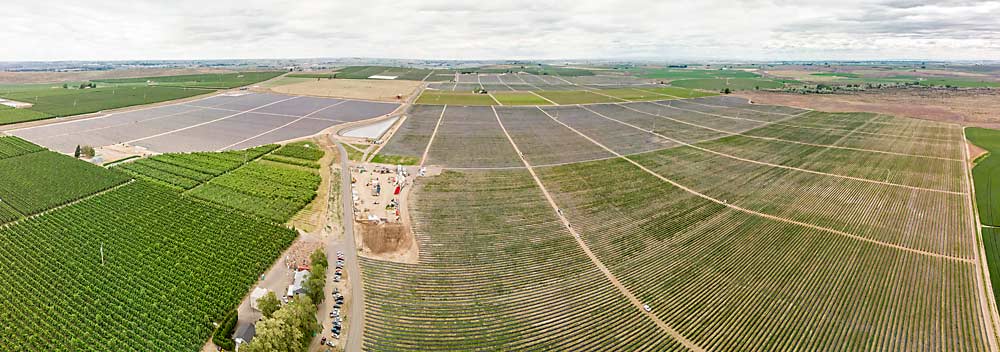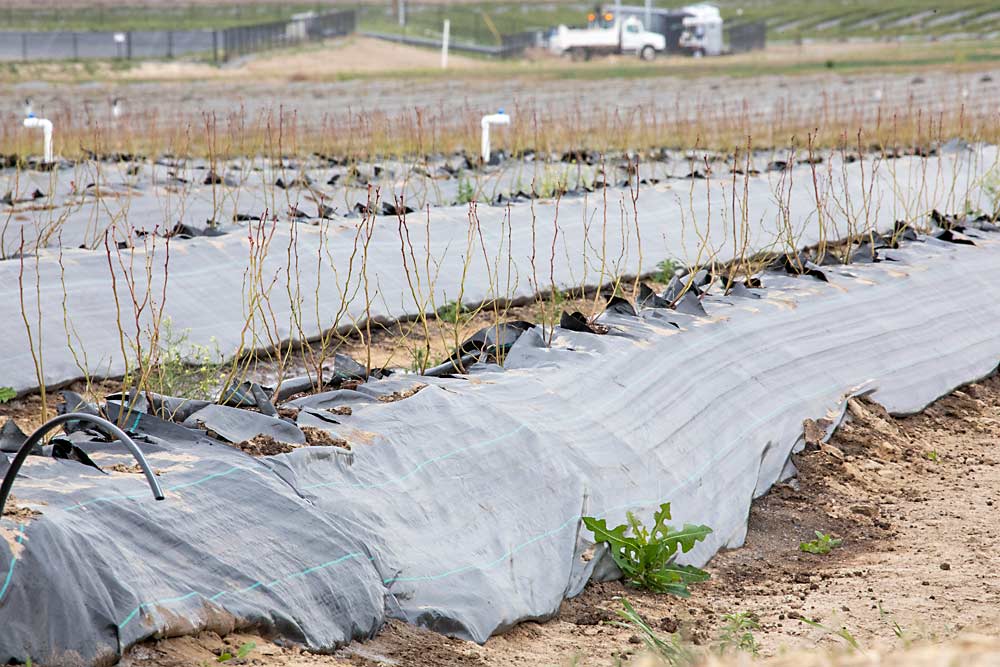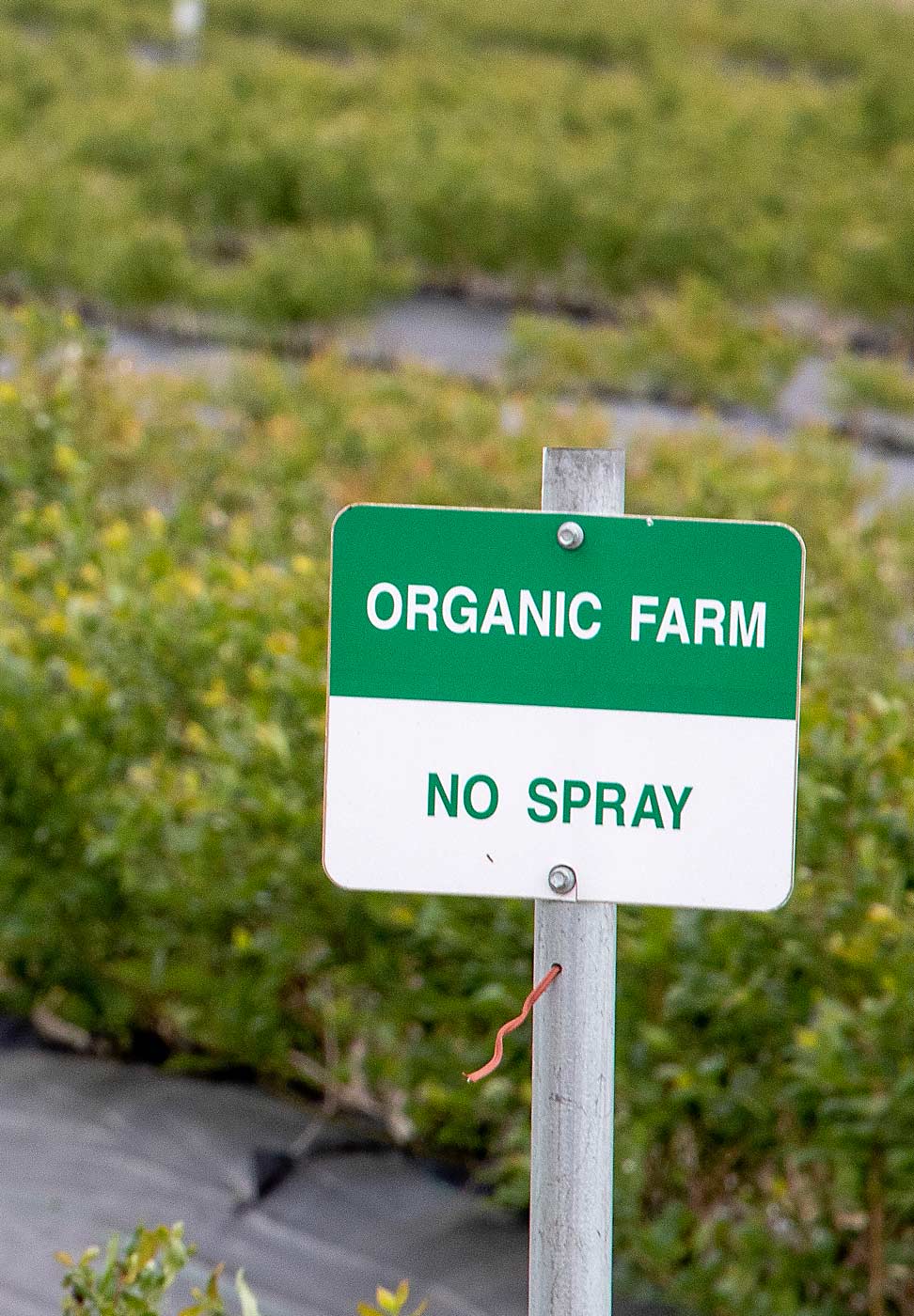
After more than a decade of the so-called “blue wave,” the U.S. blueberry industry continues to surge in production.
But don’t worry; nobody has to drown.
That’s the reassuring message from one of the country’s industry leaders.
“There is a lot more market out there,” said Kasey Cronquist, president of the U.S. Highbush Blueberry Council and the North American Blueberry Council. If the industry develops that market correctly, it will need more blueberries, he said.
Enter Sustainable Ag Ventures. The California agricultural investment team is planting a blueberry farm in Othello, Washington, that, when finished, will be among the largest producers in the world.
Washington is already the nation’s leading producer. Production has increased fivefold in the past 12 years, according to statistics from the U.S. Department of Agriculture.
“And guess what, Washington is on a blueberry planting binge,” said Alan Schreiber, executive director of the Washington Blueberry Commission. “Washington has several of the largest blueberry plantings in the world.”

Graphic: Jared Johnson/Good Fruit Grower)
Still room in the market
Many growers understandably worry about a glut. Some have pulled out acreage elsewhere in the Northwest and in Michigan, once the nation’s largest producer, as larger farms comprise more of the crop.
But Cronquist assures producers there is room to grow, as long as the industry innovates. Market studies show blueberries penetrate roughly 38 percent of U.S. households, compared to strawberries at over
70 percent.
“We have not yet tapped all the potential,” Cronquist said.
He delivered this message of encouragement during the industry’s semiannual meeting in Washington, D.C., in March, when the industry faced a record supply of frozen berries. Then the pandemic hit, driving demand for frozen blueberries through the roof.
But Cronquist believes demand for both fresh and processed blueberries will remain high if the industry innovates with technology, new retail opportunities and exports. Growers, including the Othello farm, are using mechanical harvesters to lower the labor cost of producing fresh-market blueberries, and equipment manufacturers are building harvesters with soft catch materials and sorting machines with optical technology to increase fresh quality packouts. The U.S. Highbush Blueberry Council is working with an agency that has chefs developing recipes for volume-driving opportunities in food service, such as barbecue sauces.
On the export front, the Philippines and China have both recently opened their markets to fresh U.S. blueberries, an effort the industry has been working on for 20 years, Cronquist said.

Washington
Washington leads the nation in production, followed by Oregon.
The U.S. produced 680.7 million pounds of blueberries in 2019 on 102,700 acres, while Washington produced 163 million pounds on 16,700 acres, according to U.S. Department of Agriculture statistics. The Washington Blueberry Commission puts the acreage at 22,300 acres.
Either way, production potential for organics is what caught the eye of the investment group planting the vast new farm, named Othello Blueberry LLC, said Lyla Oyakawa, one of the partners. Roy Farms of Moxee, Washington, near Yakima, is an operating partner in the venture, Oyakawa said.
It will be entirely organic. Eastern Washington lends itself to organic production, having relatively ample irrigation, low pest pressure and few diseases. They plan to use falconers for bird pressure and some shade cloth, Oyakawa said.
About 500 acres will produce a first crop this year, while workers planted about 400 new acres this year. Eventually, the farm will rely heavily on mechanical harvest, shooting for the fresh market.
Oyakawa said they aren’t the only planting in Washington and Oregon backed by outside investment money. The cost of labor and other inputs of farming require size to be profitable.
“All those things that take a lot of capital and a lot of scale to capitalize,” she said.
Oyakawa declined to share production estimates.
However, the farm will likely be one of the largest organic producers in the world, said Schreiber of the Washington Blueberry Commission, though he can think of larger farms in the state, acreage-wise.
Overall, Washington’s yields average around 10,000 pounds per acre. But in Eastern Washington, 25,000 pounds per acre is achievable for a modern planting, even organic, Schreiber said. At 1,300 acres, Othello Blueberry could eventually yield more than 32 million pounds of berries, almost 20 percent of the state’s current total.

Effect on smaller growers
Smaller growers struggle to keep up with such scale, said Mark Longstroth, extension fruit educator for Michigan State University.
Michigan was once the blueberry star, producing about half the nation’s crop in 1993, much of it for processing. But aging bushes in the damp climate where the crop is traditionally grown yield about 5,000 pounds per acre, a fraction of the yields now discussed in Eastern Washington, he said.
Competition comes from overseas, too. Peru’s growing conditions allow high yields that fill the market in the winter.
“Now, I go into the store in midwinter, there are blueberries for sale that are cheaper than my guys can grow them,” Longstroth said.
Smaller producers are concerned even in Washington, where grower returns have dropped by about half in the last five to seven years, said Jeff Weijohn of Wapato.
Weijohn’s family grows blueberries and packs them in partnership with a Portland, Oregon-based company for several other area growers left without a packer as bigger companies vertically integrated over the past decade or so. Their label, Sorbatto Fresh, is carried in stores such as Target and Whole Foods. They also have launched Sorbatto Blue Cream, a dairy-free ice cream alternative, as a way to diversify and add value.
The industry has been discussing tough times for 20 years, and efficiency is paramount now, he said. But he agrees with Cronquist that there is room for expansion, even for smaller players.
This year, however, Weijohn suffered a setback. He purchased a Korvan machine picker, but the coronavirus pandemic shuttered the production factory. He won’t receive it in time for harvest.
“That’s the cost of moving ahead,” he said. •
—by Ross Courtney
Related:
—Softer landing for fresh blueberries
—Beating the labor blues






Leave A Comment